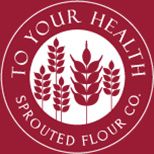Gluten Free Baking
From FINE COOKING GLUTEN-FREE 2014
The biggest challenge in gluten-free baking is to replicate the structure and texture that gluten gives to baked goods, such as yeast breads, quick breads, muffins, biscuits, scones and even pancakes and waffles. This can be achieved by using a combination of starches, increasing the amount of leaveners, adding extra eggs, and including a few special ingredients to help replace the structural benefits of gluten. Successful gluten-free baking and cooking requires making some changes in the way you prepare foods, such as using smaller or narrower pans, and using some special techniques to get desired results.
What is Gluten?
Those of us who do a lot of baking are familiar with gluten and its properties. Gluten is the protein substance found in wheat and wheat flour that, when developed, gives bread dough its elastic texture and the strong structure to trap gas bubbles released by yeast. It is what gives wheat bread its tender, chewy, light, and airy texture.
In technical terms, gluten is the specific combination of the proteins glutenin and gliadin, which is found only in wheat. Gliadin is a prolamin, a class of proteins found in a variety of grains. In wheat, it is the gliadin prolamin that causes problems for people with celiac disease.
But gluten has taken on a broader definition in recent years. Gluten has become a catchall term for all of the prolamins that cause problems for people with celiac disease. While technically not gluten, the prolamins secalin in rye and hordein in barley are also toxic to people with celiac disease or gluten sensitivity. Other grains, such as rice and corn, also contain prolamins, but these proteins do not cause a problem for people with celiac disease or gluten sensitivity.
Where is Gluten Found?
Gluten is found in wheat, rye, and barley as well as in flours made from these grains. It is also found in any products that contain these grains or are derived from any portion of the grain. Gluten has many wonderful traits, including having a high protein content, promoting absorption, and acting as a thickener to bind mixtures. It is used by food manufacturers in a variety of products to add texture and flavor. A surprising number of off-the-shelf products contain gluten.
In addition to fairly obvious grain products, gluten is commonly found in thickeners, seasonings, flavorings, deli meats, licorice, and salad dressings. Soy sauce, malt vinegar, and malted milk contain gluten. Did I mention beer? Brewer’s yeast contains gluten, so beer, ale, and lager are all on the gluten list. Gluten is also used to make high-protein imitation meatlike products that are popular among vegetarians. Imitation crab and imitation seafood both have high gluten levels.
Because the term gluten is generally used to include rye and barley, a product labeled as wheat-free does not necessarily mean it is gluten-free. Those in a gluten-restricted diet should read labels carefully to ensure they’re removing all traces of gluten from their diet.

 334-584-7875
334-584-7875

